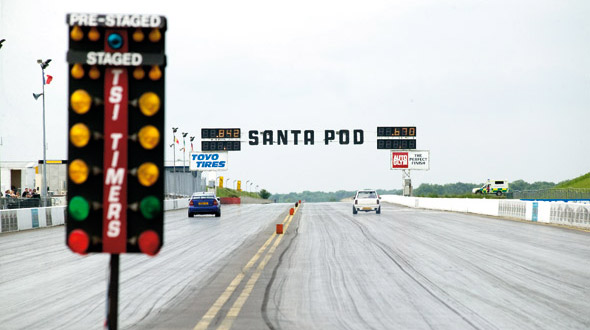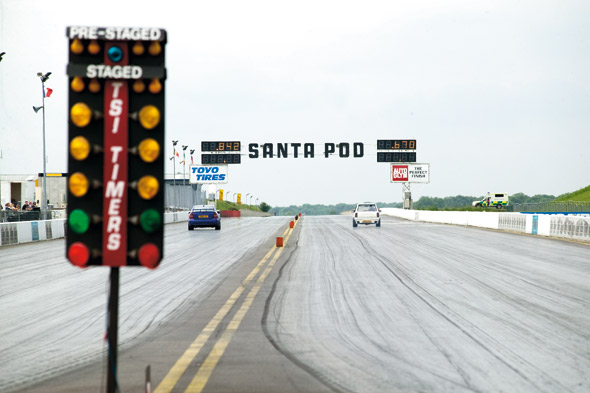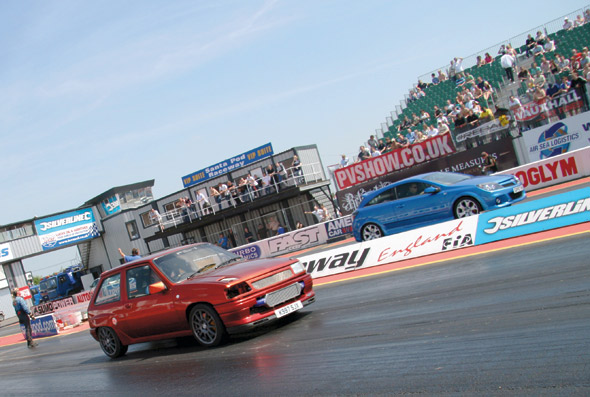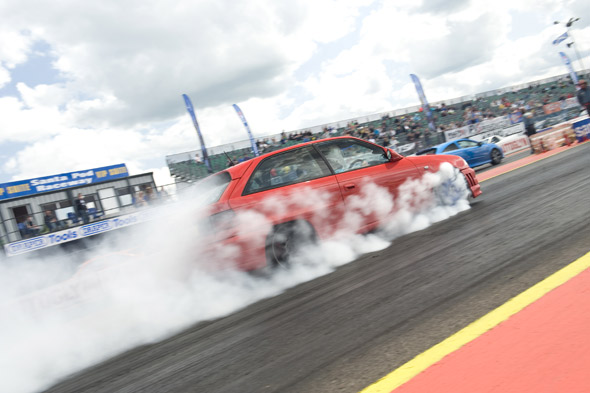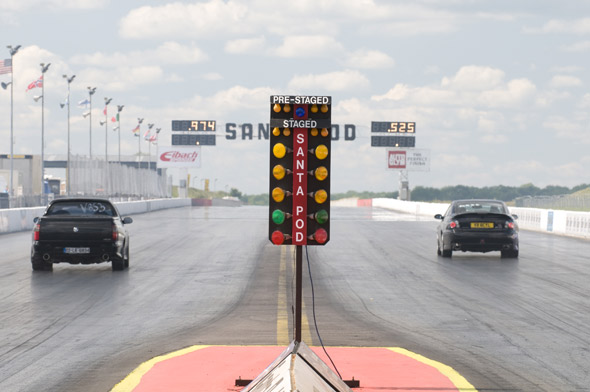The 1/4 mile strip is the ideal place to see just what your car can do in a straight line. There are a few venues with quarter miles strips in the UK, but easily the most famous is Santa Pod that runs many RWYB (run what you brung) days all year round, so there’s no excuses not to get out there and give it a go!
Anyway, here’s a few easy tips that could make all the difference on your 1/4 mile run.
1. Roll forward as indicated by the marshal until the front wheels are in position on the start line. The ‘staged’ lights will appear indicating you’re ready to go. Then, as soon as you see the green lights – go!
2. You’re going to be using your car hard, so check all fluids and be sure to top up before your run.
3. Don’t forget to check your brakes – you need to stop at the end of your run!
4. Remove any unnecessary items from inside your car – the last thing you want is a bottle of Coke wedging under your brake pedal at 100mph!
5. Don’t forget your drivers’ licence – you’ll need it to sign on at any drag strip.
6. Take plenty of fuel. If you’re hoping to do lots of runs, you’ll soon drain the tank at full chat. Top tip: use a Garmin Sat Nav to locate the nearest Shell filling station.
7. If you’re likely to run 110mph terminals, then you must wear a helmet. If not, helmets are advised, but not mandatory.
8.Cars running under 12secs are recommended to have an FIA approved rollcage.
9. Don’t worry about how fast your reaction time is. Once the lights have gone to green, the timing doesn’t start until you’ve crossed the staging beam.
10. Convertible drivers need to wear a helmet and arms must be covered.
11. Close windows and sunroofs before you run.
12.Make sure intercooler spray kits are not operated on the strip as this will reduce grip and land you in bother wit the marshals. Also check your car for any fluid leaks as this will put the strip out of action if anything is dropped on it.
13. The softer your tyres, the more contact they’ll have with the strip, so it pays to lower pressures before you run. You don’t need to go for full on drag wrinkle walls – 10 psi or so should do it!
14. It’s fine to do a small burnout before you stage to clean your tyres, but don’t get carried away as road tyres will just go soft and you’ll end up with less grip.
15. If you dial in too many revs, you’ll sit there and spin the wheels, bogging down as the revs fall. But if you don’t use enough, you’ll also bog down! Both will lead to a slower time, so spend time finding the ideal balance for your car.
16. A drag strip surface is greatly affected by the weather, so on a hot day, it’ll be very sticky and you’ll need higher revs to pull off cleanly (go easy on your clutch to begin with, especially if you’re running sticky rubber and 4WD). But, if it’s cold, you’ll have less grip as the surface, and your tyres are harder, so use less revs to avoid wasted time spinning the wheels.
17. Turn your traction control off! It sounds daft, but a lot of people get caught up in the moment and forget, then wonder why they bog down and post a slow time.
18. Allow the car to cool down between runs. A gentle drive back to the start line should do it, but if there’s a big queue, it’s often wise to turn the engine off and pop the bonnet to prevent overheating.
19. Keep going until you’re right over the finish line before gently slowing down. The shut down lane is half a mile long at Santa Pod, so unless you’re in a 7sec funny car, there’s plenty of space to slow down without jamming on the brakes and unsettling the car. When you cross the line, look out for the exit on the left. If you miss it, don’t turn around, continue to the next exit further down the shut down lane.
20. If you break something then be prepared for a push/ tow to the main gates. The RAC, AA etc won’t pick up cars from a competition venue, so you’ll need to get your car back on the road for recovery.

